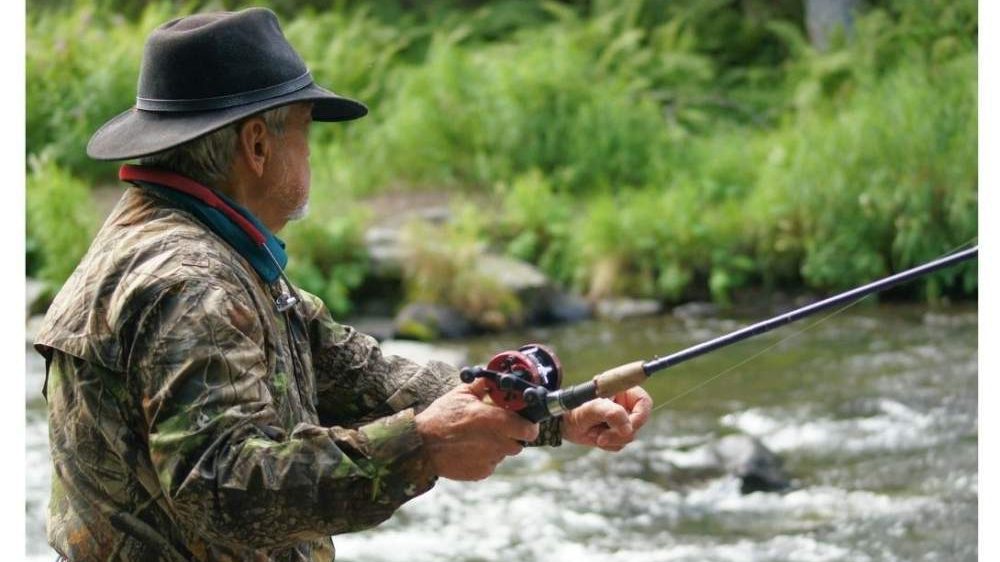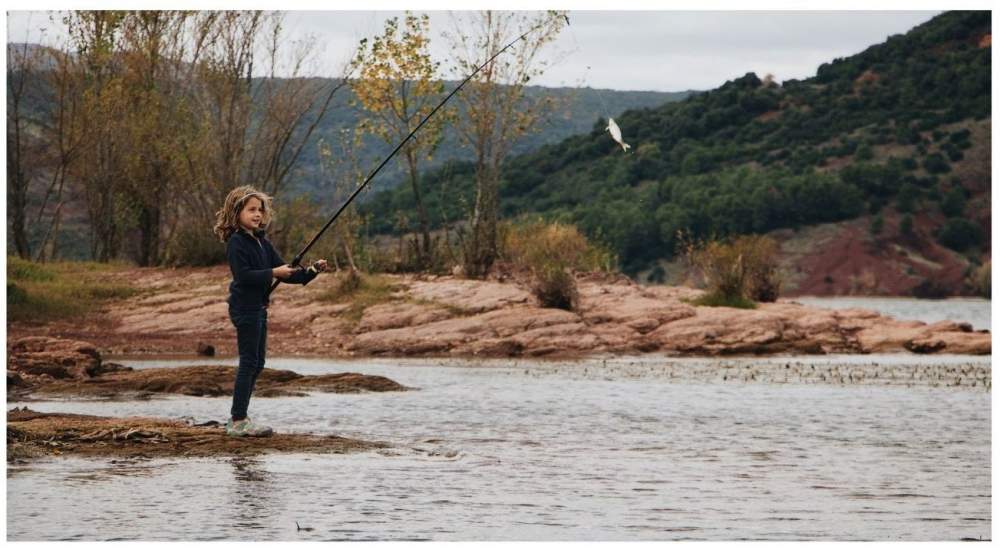Flipping and pitching, both are techniques to introduce the baits at close distance accurately and so quietly in heavy cover water surfaces like floating vegetation without spooking the fish. Both batting processes look the same, but the main difference is the distance and the presentation of baits. The flipping technique is generally used by bass anglers at distances of less than 20 to 25 feet. On the other hand, pitching is used when it needs to bait more than 25 feet in distance but the soft introduction of the baits. It seems easy to apply those processes but not. More and more practice needs to be gained to be a pro. In this, I will try to explain the differences between flipping and pitching; and the processes to be a pro in these.
Why Pitching and Flipping?
Generally, these two techniques are used to catch bass under the heavy-cover water surface. The reason behind that is bass can be found in different depths of water. They change their position from approximately 1 to 100 feet in depth according to the condition, like temperature. These guys are so sensitive to sounds. If you introduce your baits so roughly, you may frighten them. Therefore, you need to intrude on your baits softly without spooking the fish.
Not only for bass but also these techniques are useful to catch fish close to your boat or the banks.
There is another reason to apply these techniques, which is accuracy. You can bait more efficiently and more accurately with these two baiting methods. But for this, you need to practice until you get the accuracy.
Flipping
For short distances (less than 20 to 25 feet) and more accurately, soft baiting in heavily covered shallow water is the flipping process. When you can go close to the fish without spooking, you can use flipping. You may find this situation in muddy water.
Execution of Flipping
Using both hands is required to execute flipping. If you are right-handy, hold the rod in your right hand and thumb on the spool to control the distance. Take enough line that bait hangs about at the point of your wrist falling at the hip. Using the left hand, grab the line loosely between the reel and the first guide and pull the line left side when the rod is in the vertical position to the water surface.

Now, you need to make momentum on the lure by moving your rod up and down. At the execution time of through, you need to focus on the spot and release slowly the line, taking your left-hand close to the rod.
Pitching
In long-distance in clear and heavily covered shallow water to introduce bait softly, you can use the pitching method. In clear water, closing to the fish is quite hard and a struggle. But in this technique, you can reach the fish and present your bait softly and efficiently without spooking them.
Execution of Pitching
You also need both hands to execute pitching. It depends on your wrist power and your thumb. Thumb is used to control the distance like the brake of a car.
First, you need to hold your rod horizontally and take enough lines out of the rod that the bait hangs to the bottom of the rod. It gives you a good pendulum point, not too low or not too high. Then grab the bait by the other offhand but carefully. You may injure by the hooks.

Now you need to use your wrist power to through the bait parallel to the water surface to the baiting spot, releasing the bait from your hand simultaneously. Use your thumb to stop releasing the line from the reel when your bait is reached on the focusing position. This way you may get a good, accurate, and soft landing of the bait on the water.
Flipping vs Pitching: Core Differences
Flip and pitch both are common in their applicable goal which is the soft landing on the water without spooking the fish. But both are used by anglers in different situations. There are some differences between them are described below:
Accuracy
Flipping is more accurate than pitching. By flipping, you can exactly bait where you want to.
Distance
The flipping technique is for short-distance baiting than another one. You can flip about less than 20 to 25 feet because you cannot hold so much line in your left hand, which is mentioned under the “execution of flipping” paragraph. For long-distance soft landing on the water, you must use the pitching technique.
Water Quality
The pitching technique is used in clear water because you can not go so close to using the flipping technique. In clear water fishes hiding under the covered shallow surface may see you. In muddy water, you can use a flip technique to get close to the fish.
Equipment
Rod: 7- or 7.5-foot rods are more useful in the flipping technique. When you get a good size of bass, you should pull this from the water quickly before it ties up with the vegetation. Less than 7 feet, the rod is more effective in pitching technique. It gives you extra benefits through long distances.
Line: For both, a high-resistance fishing line is good. It helps not to tie up with the heavy cover surface.
Reel: For both, you need to have a good rate of the spinning reel.
Conclusion
We expect now you are aware of the difference between flipping and pitching. And there are so many video tutorials explaining those two terms. It’s easy to learn this technique, but to be a pro you need to practice more and more. So, all you have to do is practice, practice, and practice.
Question & Answers
What is the best rod length for flipping and pitching?
The best rod length for flipping and pitching typically ranges from 7 to 7.5 feet. This length provides the right balance of power and sensitivity to accurately cast and control the bait while still being short enough to maneuver in tight spaces.
In addition to the length, the type of rod action and power is also important when flipping and pitching. A medium-heavy power rod with a fast action is a good choice, as it allows for a quick hookset and the ability to pull fish out of heavy cover.
Flipping and pitching are techniques used in freshwater fishing, mainly targeting bass, where angler cast and deliver the bait in a precise spot, typically a brush pile or weed bed, where the fish like to hide.
A shorter rod, around 7 ft, allow angler to have more control over their bait and make more accurate casts, it also help when fishing in tight spaces or heavy cover as it allows for better rod movement and getting a good hook set.
Additionally, the shorter rod allows for better casting and control of the bait, which is especially important when fishing in tight spaces or heavy cover.
What speed reel for flipping?
A high-speed reel (7.1:1 or higher) is a good choice for flipping. This type of reel allows for a quick retrieve of the line, which is useful for quickly reeling in the bait and setting the hook on a fish. The fast retrieve rate helps angler to quickly pull in the fish once they feel a bite.
Flipping is a technique that requires fast reaction time, so high speed reel provides the angler with the ability to quickly set the hook and reel in fish before they have a chance to spit out the bait.
Additionally, a high-speed reel allows the angler to make more casts in a shorter amount of time, which can be important when fishing in areas with a high concentration of fish.
It’s important to note that when fishing, matching the right gear to the right technique and conditions is important, therefore, even though flipping and high speed reel are commonly paired, it’s always worth to consult with local anglers or fishing experts before making a final decision.
What size hook for flipping?
The size of hook for flipping can vary depending on the type of bait you are using and the size of the fish you are targeting. In general, a hook size of 4/0 to 6/0 is a good choice for flipping.
Flipping is a technique used mainly for bass fishing, and bass have a relatively small mouth, therefore, the hook size should be picked appropriately.
For larger baits such as crawfish or worms, a 4/0 or 5/0 hook can work well. For smaller baits such as finesse worms or creature baits, a 6/0 hook is a good choice. The hook should be matched to the size of the bait, and not be too small or large.
Hooks with a wide gap are also popular among flipping anglers, as they can accommodate bigger baits, and provide better hook setting capabilities.
Also, it’s important to note that in some areas, the regulations might require a certain hook size, and it’s always a good idea to know the rules and regulations of the local waters before going fishing.
Can you flip with a spinning reel?
Yes, it is possible to flip with a spinning reel. In fact, many anglers prefer using a spinning reel for flipping because of its ease of use and versatility. Spinning reels can be used with a wide variety of fishing lines, lures, and baits and they are also much easier to cast than baitcasting reels.
Flipping with a spinning reel usually require a heavier rod compared to the one used for baitcasting reel.
When flipping with a spinning reel, a good choice is to use a medium-heavy power rod with fast action and a good quality spinning reel with high retrieve rate, matched with a braided line of 50-65 lb test or fluorocarbon line in 20-30 lb test.
It’s important to note that flipping with a spinning reel takes a bit more practice to master the technique and to avoid winding the line around the rod, but with practice, it can be an efficient and effective way to catch fish.
Also, when using a spinning reel, it’s important to have a good drag system, as well as a good quality line, to make sure you are able to fight and land fish of different sizes.
Related Articles:


